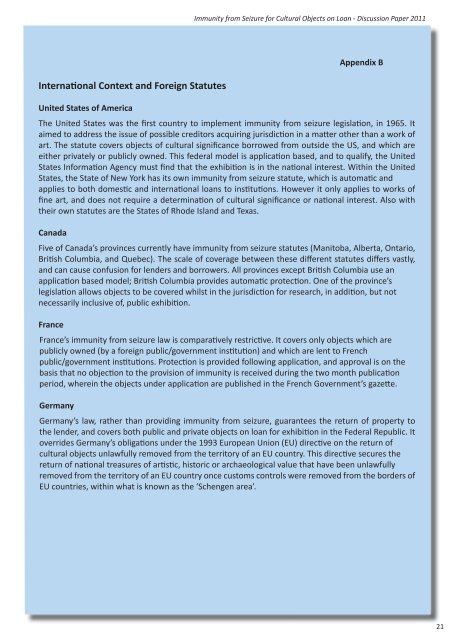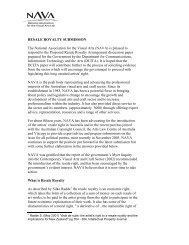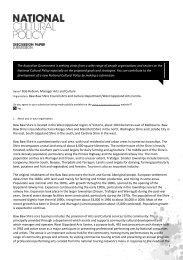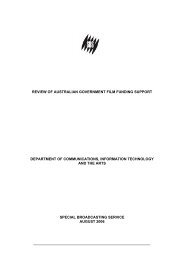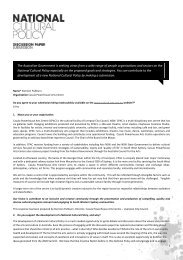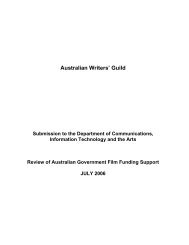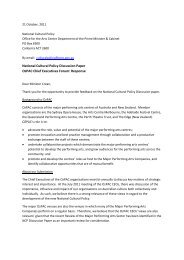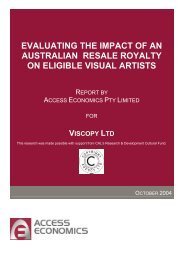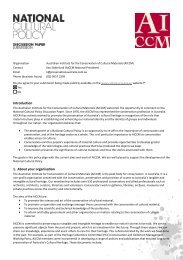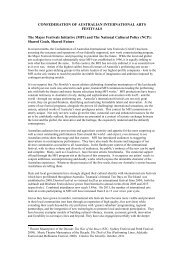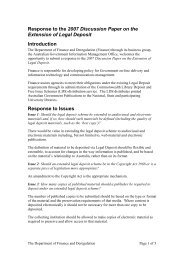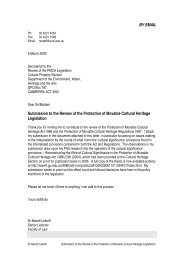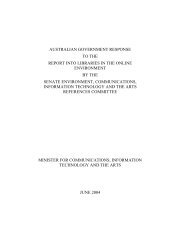Discussion paper (PDF - 459 KB)
Discussion paper (PDF - 459 KB)
Discussion paper (PDF - 459 KB)
Create successful ePaper yourself
Turn your PDF publications into a flip-book with our unique Google optimized e-Paper software.
Immunity from Seizure for Cultural Objects on Loan - <strong>Discussion</strong> Paper 2011International Context and Foreign StatutesAppendix BUnited States of AmericaThe United States was the first country to implement immunity from seizure legislation, in 1965. Itaimed to address the issue of possible creditors acquiring jurisdiction in a matter other than a work ofart. The statute covers objects of cultural significance borrowed from outside the US, and which areeither privately or publicly owned. This federal model is application based, and to qualify, the UnitedStates Information Agency must find that the exhibition is in the national interest. Within the UnitedStates, the State of New York has its own immunity from seizure statute, which is automatic andapplies to both domestic and international loans to institutions. However it only applies to works offine art, and does not require a determination of cultural significance or national interest. Also withtheir own statutes are the States of Rhode Island and Texas.CanadaFive of Canada’s provinces currently have immunity from seizure statutes (Manitoba, Alberta, Ontario,British Columbia, and Quebec). The scale of coverage between these different statutes differs vastly,and can cause confusion for lenders and borrowers. All provinces except British Columbia use anapplication based model; British Columbia provides automatic protection. One of the province’slegislation allows objects to be covered whilst in the jurisdiction for research, in addition, but notnecessarily inclusive of, public exhibition.FranceFrance’s immunity from seizure law is comparatively restrictive. It covers only objects which arepublicly owned (by a foreign public/government institution) and which are lent to Frenchpublic/government institutions. Protection is provided following application, and approval is on thebasis that no objection to the provision of immunity is received during the two month publicationperiod, wherein the objects under application are published in the French Government’s gazette.GermanyGermany’s law, rather than providing immunity from seizure, guarantees the return of property tothe lender, and covers both public and private objects on loan for exhibition in the Federal Republic. Itoverrides Germany’s obligations under the 1993 European Union (EU) directive on the return ofcultural objects unlawfully removed from the territory of an EU country. This directive secures thereturn of national treasures of artistic, historic or archaeological value that have been unlawfullyremoved from the territory of an EU country once customs controls were removed from the borders ofEU countries, within what is known as the ‘Schengen area’.21


